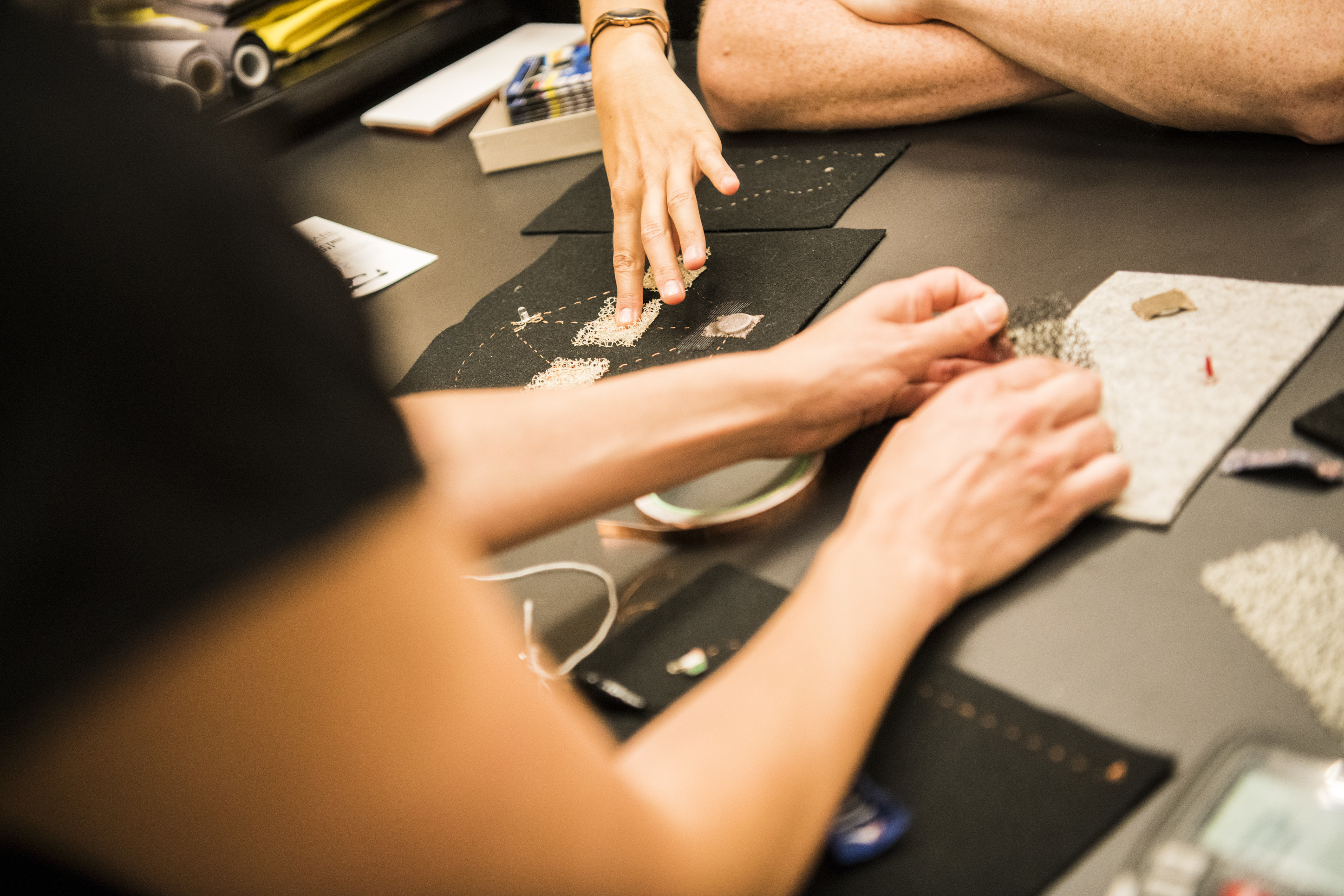
At the Futurium Lab architecture becomes alive
Under the Spell of the Noosphere
It vibrates, it makes noises, it gives off light: whoever approaches the cloud-like structure brings it to life. The conically shaped tips emit light signals; the sound of dripping is audible; the white fronds made of mylar, a polyester foil, quiver within. The noosphere, which is currently being created at the Futurium Lab, interacts with its viewers.

At first glance, it is an art object – but there is so much more to it than that: what if buildings could react to their residents, make the immediate environment more comfortable, and even repair themselves? Can architecture live? The Canadian Philip Beesley thinks beyond the boundaries of traditional building practice. The creator of the noosphere is an avant-garde architect. In his noosphere he combines many disciplines: architecture, synthetic biology, artificial intelligence, mechanics, sound and light.
A sphere made of steel, acrylic and resin
Even though it looks as if it has been assembled spontaneously, it follows an intricate construction plan: everything has its place in the sphere made of steel, acrylic and resin (that is, a fast-curing casting resin from the 3D printer). “This object is unique in its complexity and one of the most multi-layered pieces Beesley has ever created,” says Futurium Lab Consultant Stefanie Holzheu. For 13 days, 15 helpers worked in the Futurium basement and assembled hundreds of thousands of individual parts.
The acrylic tips are connected with steel elements and provide stability. Microprocessors and sensors observe the surrounding area and collect information. Lights and sounds are reactions to external stimuli. A combination of oil, inorganic chemicals and aqueous solutions in glass containers creates a kind of skin that could soon be deployed as self-renewable material in buildings.
Is the noosphere scared?
The sum of its features gives the object a special aura and creates certain moods. An environment that is sentient: is the noosphere scared? Does it feel joy? Is it nervous? “Visitors are invited consciously to attribute emotions and characteristics to the object,” says Stefanie Holzheu. And these can be different each time they visit, because the noosphere learns and modifies its behaviour in a new way over and over again.
Yet with all its complexity – the noosphere also fascinates with its mysterious aesthetics. Inviting and strange at the same time, like an object from another world.
